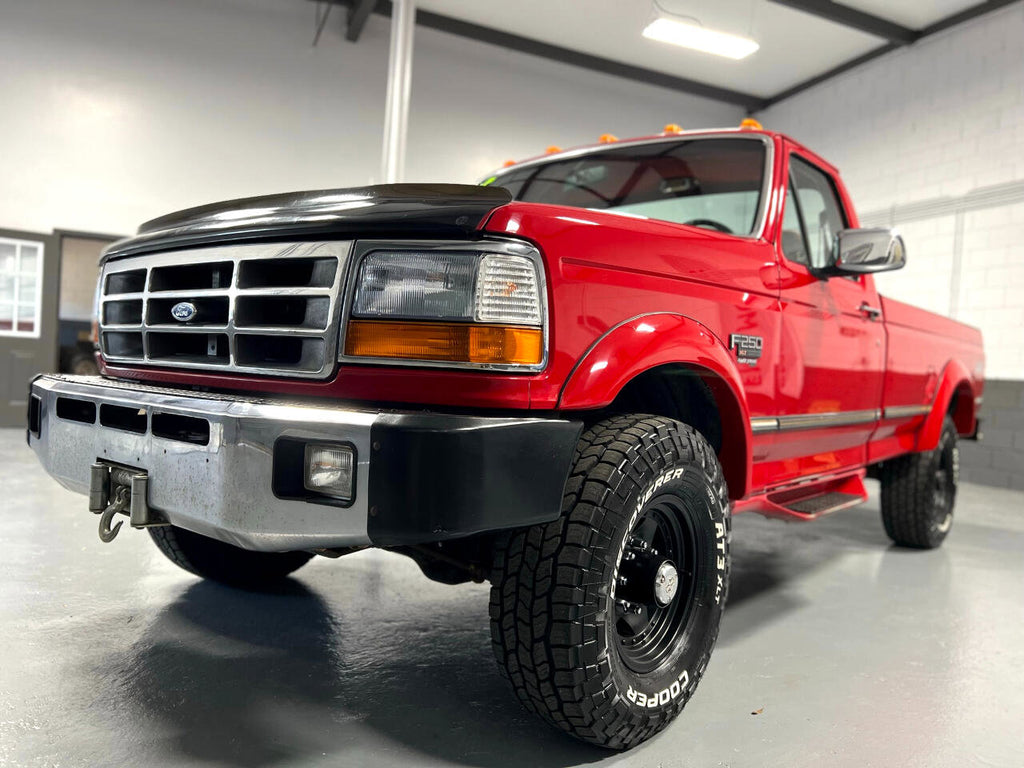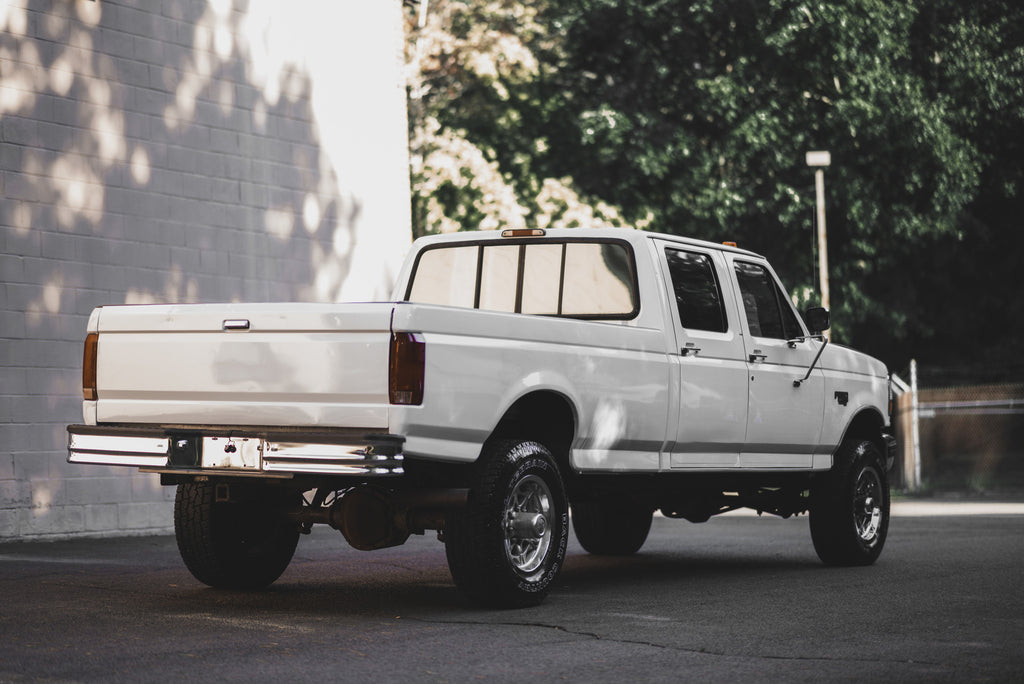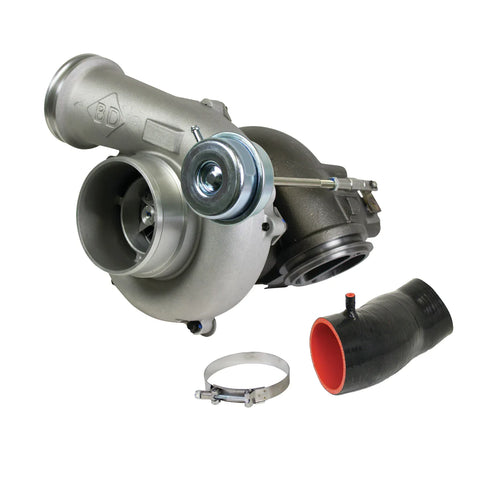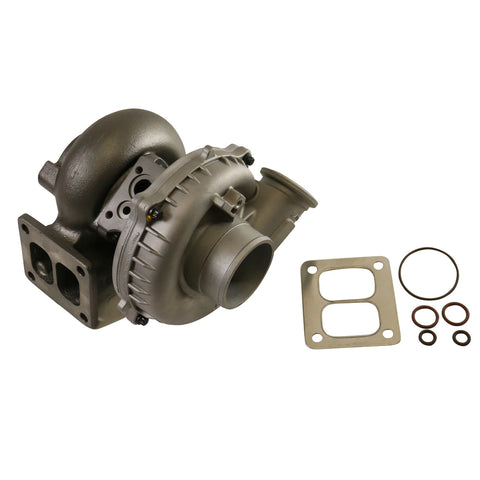START TYPING TO SEE PRODUCTS YOU ARE LOOKING FOR.
0
Your shopping cart is empty.
In our rapidly evolving technological world, keeping pace with continuous upgrades can be quite challenging. We frequently replace our computers, phones, and televisions as newer models emerge, compelling us to stay updated. However, occasionally, a product defies these norms due to its resilience, outliving its anticipated lifespan. One such product is the 7.3L Ford Power Stroke diesel engine, a testament to remarkable endurance, with tens of thousands still operational today.

What makes this engine earn such high regard? What are its standout features and how can they be further improved?
Debuting in Ford's F-Series truck range in 1994, the 7.3L Power Stroke diesel engine offered an option to pair with either the ZF 5-speed manual or the E40D 4-speed automatic transmission. Trucks equipped with the 1994 Power Stroke boasted an impressive 210 horsepower and 425 lb-ft of torque.
Produced by International Navistar, the performance of this engine significantly outperformed its predecessors, the 6.9L IDI and 7.3L engines. Although its displacement was the same as the preceding models, it introduced an electronically controlled direct-injection system, generating up to 21,000 psi. Its exceptional reliability outshone even its successor, further solidifying its success for Ford and keeping it in production until 2003.
The 7.3L Power Stroke engine operates using a unique single shot HEUI (Hydraulic Electric Unit Injector) injector system. This system employs high-pressure engine oil to produce fuel pressure right within the injector body, a departure from the conventional injection pump method. The implementation of the HEUI system resulted in enhanced performance, superior fuel efficiency, and reduced emissions.
The 1994 Ford Power Stroke 7.3L engine, as stated previously, generated 210 horsepower and 425 lb-ft of torque. This performance marked an improvement of 40 HP and 87 lb-ft of torque compared to the IDI engine. Throughout its production period, the engine saw numerous enhancements, boosting the power of the trucks. In 1998, around halfway through the engine's production lifespan, horsepower climbed to 225 HP at 3,000 RPM, and torque rose to 450 lb-ft at 2,000 RPM. From that year onwards, the trucks met California's emission standards, and all the Power Strokes were equipped with split-shot injectors.
By 2003, the Power Stroke engine was reaching the end of its production cycle. In its final year, the automatic transmission variant produced 250 HP at 2,600 RPM, while the standard transmission variant generated 275 HP at 2,800 RPM. The torque for the automatic transmission stood at 505 lb-ft at 1,600 RPM, and for the standard, it was 525 lb-ft at 1,600 RPM.
Despite its notable durability and the fact that it continues to be a popular choice among enthusiasts today, the 7.3L Power Stroke is not without its issues. Here are some of the prevalent challenges:
The IDM, situated on the driver's side fender, can encounter issues like water intrusion or damaged wiring, both of which can lead to non-starting conditions or rough running of the engine.
A defective CMP could cause the engine to shut down unexpectedly or prevent it from starting altogether. This problem is often sporadic, making it difficult to diagnose. Given the potential for this issue, it might be advisable to keep a spare CMP handy.
The IPR, located in the high-pressure oil pump valley, can present a few problems. Its sensor may fail, or its wires might get damaged. In some cases, the valve can stick or its seals could be damaged, affecting the overall performance of the engine.

While the 7.3L engine may seem underpowered compared to modern standards, it was quite a standout during its era. Current owners often look to upgrade components to boost performance. Here are some potential upgrades to consider:
An upgraded turbocharger is arguably the most straightforward and effective upgrade for your vehicle. This affordable and reliable modification enables your turbo to deliver significantly more boost throughout the entire rev range, enhancing power and torque.
 Turbo Thruster II Kit - Ford 7.3L Power Stroke
Turbo Thruster II Kit - Ford 7.3L Power Stroke
Diesel trucks possess a distinctive sound, setting them apart from gasoline-powered counterparts, primarily due to the exhaust system. Replacing the existing exhaust system on your 7.3L Power Stroke can enhance exhaust flow, decrease exhaust temperatures, and reduce backpressure. This modification is one of the most cost-effective ways to boost horsepower.
 Exchange Turbo - Ford 7.3L Power Stroke
Exchange Turbo - Ford 7.3L Power Stroke
Improving your fuel system can greatly enhance your vehicle's performance, potentially doubling the stock horsepower and torque. The early Power Stroke engines particularly benefit from this upgrade. Switching a factory cam-driven lift pump with an electric unit and larger supply lines can enhance fuel supply pressure and support higher horsepower.
Moreover, early engines occasionally had smaller fuel injectors, which could result in inconsistent fuel pressure. Modifying your injectors while updating your fuel system can offer a noticeable performance boost.
Larger injectors are not just about volume. With broader nozzles, fuel can be injected more swiftly, requiring less timing advance to achieve the desired power. This change reduces stress on the engine's rotating assembly.
Intake upgrades are a simple, cost-efficient way to increase power and efficiency. Upgrading the intake can lead to gains in torque and power, a quicker response, lower EGT, and improved fuel economy.
Despite its age, the 7.3L Power Stroke continues to attract a loyal following, largely due to its impressive durability. However, this doesn't mean there isn't room for improvement.
By utilizing upgraded parts from BD Diesel, you can elevate the performance of your 7.3L Power Stroke. To learn more about the best upgrades and how to maximize your engine's potential, don't hesitate to contact us. We're eager to answer all your questions and help you optimize your engine's performance.
The precise towing capacity of a Power Stroke can vary depending on a few factors such as the cab configuration, whether it's a two-wheel or four-wheel drive, and if it's a dually. In optimal conditions, the conventional tow capacity of the 7.3L Power Stroke is up to 12,500 lbs. When it comes to 5th wheel towing, the 7.3L Power Stroke can tow up to 13,900 lbs.